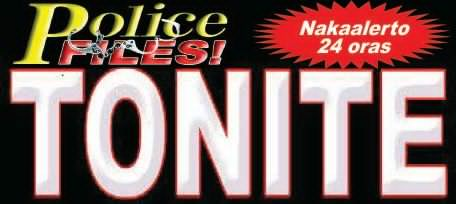Advertisers
ISINULAT ko ang munting sanaysay na ito upang ipakita ang pagkakaiba g mga broadcast journalist ng Estados Unidos sa mga broadcast people ng Filipino. Marunong magsulat ang mga broadcast journalist na Amerikano at pagpapalimbag sila ng kanilang mga aklat. Pakibasa:
THEY KNOW HOW TO WRITE, DO THEY?
Famous American broadcast journalists like Walter Cronkite, David Brinkley, Tom Brokaw, Barbara Walters, Dan Rather, and a host of others wrote books during the span of their careers and in retirement. Their books contain interesting details, enabling them to preserve these memorable details in their written works.
In brief, they have respect for writing. Incidentally, many broadcast journalists were writers before they made the transition to broadcast journalism, which is more lucrative than working and writing as reporters in newspapers or news agencies.
Walter Cronkite, the revered name in U.S. journalism since he was once proclaimed “the most trusted man” in the U.S., wrote three books. I have his book, which I bought for a song in a sidewalk book sale. His book “A Reporter’s Life” contains interesting details, which included his transition to a broadcast journalist from a wire service reporter stationed in the old Soviet Union to a venerated name in CBS. He made the transition when television was a nascent technology.
Cronkite’s book contains some sidelights of his major coverage including the 1945 Nuremberg Trials, Vietnam War, Apollo 11’s landing on the moon, among others. He witnessed how Chief Prosecutor Robert Jackson fumbled in his cross-examination of Hermann Goehring, the second highest German Nazi official, during the 1946 Nuremberg Trials.
I also bought Brinkley’s book “Beat: People, Places, and Events That Shaped My Time,” which contains his memoirs of the major events he covered in his career in NBC and ABC. His humor was wry and dry but profound and poignant to a large extent. Brinkley interviewed Ferdinand Marcos during his dictatorial years. He was a tough interviewer, who was never afraid of raising the most intimidating questions to the late dictator.
Brokaw’s book” Boom: Voices in the 1960s,” likewise brings memories of the major events that took place in the tumultuous decade. They included the Vietnam War, the rise of the Hippie culture, the Civil Rights Movement, among others. I have noticed the profundity of many of Brokaw’s views on these episodes of American history.
Barbara Walters’s book “Audition” details her competition with other broadcast titans like Cronkite, among others, to bring out the best in the coverage of many world events. I found it most exhilarating to read because she even wrote how she lost her virginity and how Cuban dictator Fidel Castro took a liking to her, putting her ahead in the competition. Her narrative on her daughter’s rebellious ways and reformation to become an NGO leader is also most telling.
Maria Ressa, a Filipino journalist and a recipient of the Nobel Peace Prize wrote two interesting books on the rise of terrorism in Southeast Asia: “Seeds of Terror: An Eyewitness Account of Al-Qaeda’s Newest Center (2003) and From Bin Laden to Facebook: 10 Days of Abduction, 10 Years of Terrorism (2013).” She worked for CNN for two decades before forming rappler.com.
But Maria Ressa is an exception of the host of Filipino broadcast journalists, who hardly have the appreciation, but less the passion to read and write and leave something to posterity and history. Knowing that Filipinos are not a reading people, they too have developed the abhorrence to put their thoughts into writing.
\
The late Rafael Yabut, Johnny de Leon, and Rod Navarro once dominated the airwaves for three or four decades, but are now half-forgotten because they have left no memoirs. This is not good for journalism and the country as well. The same is true with the late Mike Enriquez, who, although he had a velvet voice, became synonymous for his shrieking and panicky style of reporting.
***
ISINULAT ko rin ang sanaysay na ito:
ATIN ANG AYUNGIN SHOAL; HINDI ITO SA CHINA
Magaling ang ating mga sundalo. Kung matino si Gongdi noong siya ang presidente, hindi maaari na basta duduruin lang ng mga Intsik ang ating mga sundalo sa mga pinag-aagawang isla sa West Philippine Sea. Tandaan na ang West Philippine Sea ay bahagi ng South China Sea na nakapaloob sa exclusive economic zone ng Filipinas. Hindi ito pag-aari ng China.
Noong 1999, kinamkam ng China ang Ayungin Shoal, isang bahura (reef) sa WPS. Hindi malaman ng gobyerno kung ano ang gagawin. Nagpadala ang China ng maraming sasakyang pandagat upang paligiran ang bahura at tuluyang kamkamin kahit hindi sa kanila. Si Erap Estrada ang presidente pero walang ginagawa kundi painom-inom lang sa Malakanyang. Si Orly Mercado na kalihim noon ng tanggulang bansa ang abala sa pagharap ng suliranin na iyon.
Ayon sa “Solid Rock,” ang aklat ni Marites Danguilan-Vitug, tinanong ni Mercado ang mga opisyales ng AFP kung ano ang gagawin natin bilang sagot sa ginagawa ng China. May suhestiyon si Vice Admiral Eduardo Ma. Santos, flag-officer-in-command ng Philippine Navy, na gamitin ang mga nabubulok na LST ng bansa sa isyu.
Dinala ng Navy ang BRP Sierra Madre na ginamit noong World War 2 at isinasaad sa Ayungin Shoal. Nilagyan ito ng ilang sundalo na pinapalitan tuwing ikatlong buwan. Ito ang nagsilbing palatandaan ng Filipinas na atin ang bahurang iyon. Walang magawa ang mga Intsik dahil hindi natin inaalis ang BRP Sierra Madre doon.
Hiningi kamakailan ng gobyerno ng China na alisin ang LST doon. Ikinatwiran ng sugo ng China sa Filipinas na may pangako tayo na aalisin iyon. Ngunit sinabi ni Delfin Lorenzana na wala siyang ipinangako na aalisin iyon. Walang makapagsabi kung totoo na may pangako nga tayo. Mukhang hindi natin aalisin iyon. Ito ang tama. Manindigan tayo sa China.

